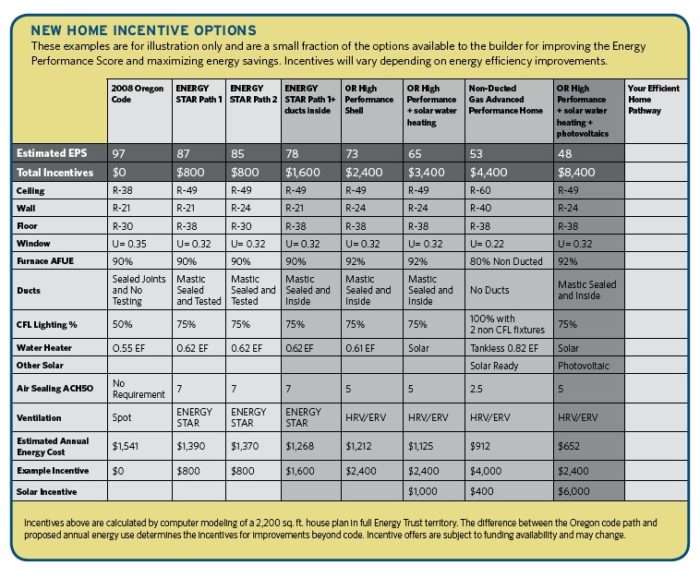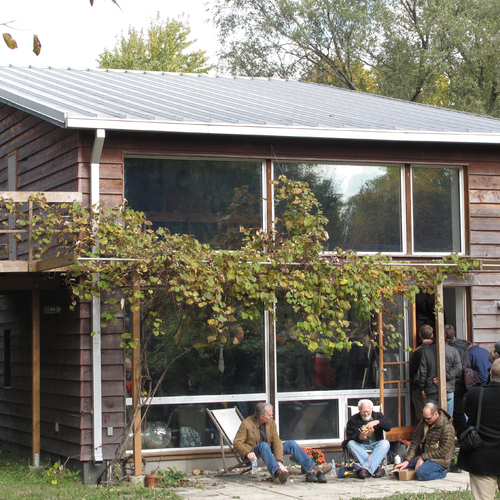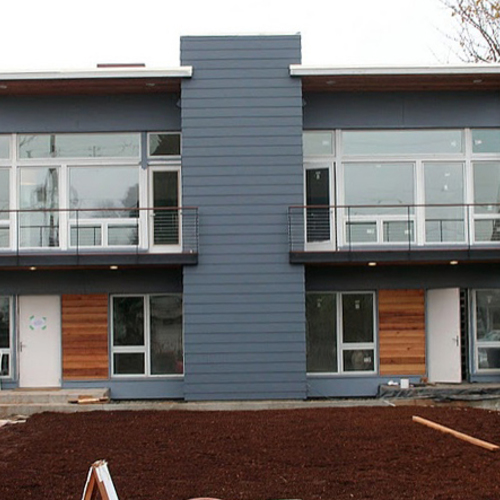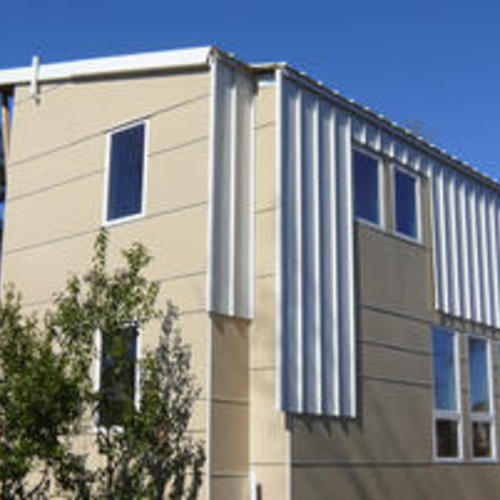
Image Credit: Energy Trust of Oregon
UPDATED on March 30 to clarify the distinction between the Let Oregon Lead Committee and the Reach Code Committee, which is the actual governmental body responsible for Reach Code development.
In July 2009, Oregon Governor Ted Kulongoski signed into law Senate Bill 79, which was designed to improve the energy efficiency of buildings planned for construction by authorizing updates to Oregon’s building codes.
The basic goal was to bring Oregon code to the level of national model codes, such as California’s Title 24 code requirements. Another important provision of the law directed the state to focus on developing optional code, called Reach Code, that would help push the energy efficiency envelope beyond state requirements. A significant step in that direction was taken earlier this month when members of the group responsible for developing Reach Code – the Reach Code Advisory Committee – unanimously approved adoption of the Passivhaus standard as an option for commercial construction.
A coalition of Passive House consultants, green builders, and nonprofit agencies called the Let Oregon Lead Committee also announced that the Reach Code Committee will consider, in an upcoming session, adopting the Passivhaus standard as a Reach Code option for residential construction.
Reaching for top performance
S.B. 79 directed the Department of Consumer and Business Services, which includes the Oregon Building Codes Division, to update statewide code in place in 2009 to higher levels of energy efficiency for new commercial and residential buildings. The energy efficiency requirement for nonresidential structures increased 15% to 25%; for residential buildings the increase was 10% to 15%.
Energy use in a nonresidential building conforming to the Reach Code’s newly adopted Passivhaus option would be cut by 70% to 90% over a similar structure built to mandatory code, the advisory committee notes in its announcement. While the Let Oregon Lead Committee acknowledges that the new code is an “option within and option,” its purpose is “to incentivize high-performance buildings, and to allow jurisdictions and builders to field test state-of-the-art construction methods.”
The committee also said the Passivhaus Reach Code measure was endorsed by 14 nonprofits and 29 business groups, including the Oregon Citizens’ Utility Board, the Oregon Environmental Council, the Climate Solutions advocacy group, Rocky Mountain Institute, and a business alliance called the Voice for Oregon Innovation & Sustainability.
Portland-based Passivhaus consultant Graham Wright wrote the adoption amendment, whose Let Oregon Lead proponents include two members also based in Portland: Sam Hagerman, president of the national Passive House Alliance and president of contracting company Hammer & Hand, and Stephen Aiguier, president of Green Hammer, a design and construction firm.
Incentives and goals
Hammer & Hand’s director of business development, Zack Semke, told GBA that the Reach Code Committee could consider adoption of the Passivhaus standard as a Reach Code option for residential construction as early as next month. Details of compliance incentives, beyond federal tax incentives, are still being ironed out, but Semke noted that projects being built to the Passivhaus standard would in any case qualify for financial incentives available through the state-mandated nonprofit Energy Trust of Oregon, which helps fund energy-saving projects by many of Oregon’s utility customers.
A house built to the Passivhaus standard, for example, would conform to Energy Trust of Oregon’s Advanced Performance Home criteria, which would qualify the project for an incentive of $4,000. Other, utility-sponsored programs also are being considered. And Semke points out that local jurisdictions are likely to develop their own sets of incentives for Reach Code compliance – expedited review and permitting, say, or increased height or density allowances.
At this point, Semke adds, municipalities cannot vote to make provisions of the Reach Code mandatory, in the way municipalities in Massachusetts can adopt stricter code requirements for both residential and commercial buildings. Pending further approval by the state, however, the Reach Code could be folded into Oregon’s base building code in three years.
Weekly Newsletter
Get building science and energy efficiency advice, plus special offers, in your inbox.















One Comment
Incentives
Great Stuff, and I'm not talking foam either. That Incentive isn't much to write home about, but I suppose better than nothing. That incentive wouldn't even come close to paying for half of the foam under a Passivhaus slab. I think setting the bar higher, and not to the Passivhaus extreme standard, would have been a better start. What is going to happen is the slow decrease demise of the Passivhaus standards as everyone interested clings on with their fingernails from below...........I am a huge believer and supporter of the Passivhaus, but I am even less than a minority. Most people don't know what the hell it is, much less that it is relative in nearly every climate.
Log in or create an account to post a comment.
Sign up Log in